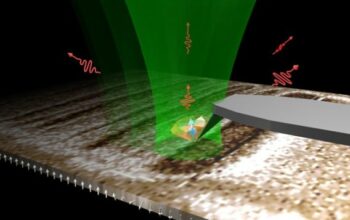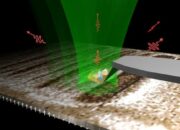In the rapidly evolving field of photonics, students and professionals alike often find themselves grappling with a pivotal question: What is the best photonics book for self-study? Given the breadth and depth of photonics, ranging from fundamental principles to advanced applications, this inquiry can seem daunting. Therefore, let us delve into what constitutes an effective resource for self-directed learning in this dynamic discipline.
First and foremost, it is essential to consider the foundational concepts of photonics. A well-rounded introductory text should begin with the basics of optics, covering essential topics such as electromagnetic theory, light propagation, and the nature of photons themselves. The challenge lies not just in understanding these principles, but in synthesizing them into a coherent framework that supports further exploration. A textbook that balances rigorous theoretical discourse with practical examples can significantly aid the self-learner in this venture.
One notable contender in the realm of introductory photonics is “Photonics: Principles and Practice” by Christian C. ανθων. This comprehensive tome is particularly well-suited for self-study, as it meticulously elucidates foundational topics while interspersing relevant applications in diverse areas such as telecommunications, biomedical optics, and materials science. What distinguishes this book is its pedagogic approach, offering a plethora of thought-provoking problems and case studies, thereby challenging the learner to engage actively with the material.
Next, once a foundational understanding is established, aspiring photonics aficionados may seek to explore more specialized texts. At this juncture, “Fundamentals of Photonics” by Bahaa E. A. Saleh and Malvin Carl Teich emerges as a quintessential resource. This expansive volume encompasses a wide range of topics, including wave optics, laser theory, and optical communications. Its detailed treatment of advanced subjects is balanced by an accessible writing style, making the intricate world of photonics more approachable for the self-learner. The inclusion of numerous diagrams and illustrations further augments the reader’s comprehension of complex concepts.
With the groundwork laid, an inquisitive learner may wish to delve into the applications of photonics. Enter “Lasers and Optical Engineering” by Richard E. Alferness, which offers a rich exploration of laser technology and its myriad applications. The text presents a unique blend of theoretical rigor and practical insight, proving invaluable for those interested in the engineering aspects of photonics. However, the reader must be cautious of the challenges posed by the intricate mathematics presented; perseverance is key to unlocking the secrets contained within these pages.
As the self-learner journeys deeper into the realm of photonics, they may encounter the necessity of exploring current research and technological advancements. In this quest for knowledge, “Photonics for Dummies” comes as a surprisingly invaluable resource. Unlike typical entry-level texts, this book adopts a refreshing, non-technical approach while still providing vital insights into contemporary trends in photonics. It presents a mosaic of concepts in an engaging fashion, urging the reader to consider real-world implications and innovations in the industry.
Moreover, a critical aspect of self-study is the ability to contextualize and synthesize information from multiple sources. As one peruses various texts, an essential strategy is to engage with supplementary materials such as online courses and lectures. Platforms like Coursera or edX feature courses from esteemed institutions that delve into specific aspects of photonics. This multimedia approach enriches one’s understanding and mitigates the isolation often experienced in self-directed studies.
The integration of problem-solving into self-learning is of paramount significance. Books that prioritize hands-on experimentation and problem sets enable the reader to solidify their understanding and confront the challenges inherent to the study of photonics. Therefore, when evaluating potential textbooks, consider those that incorporate end-of-chapter problems or laboratory exercises. Such texts compel the learner to apply theoretical knowledge to practical scenarios, thus reinforcing their grasp of complex concepts.
As the self-learner progresses, it is vital to periodically reassess their understanding and adapt their study methods as necessary. Forming study groups, engaging with online forums, or participating in discussions with peers can spark new insights and alleviate the cognitive burdens that often accompany independent study. In essence, one must cultivate a dynamic learning environment, where questioning and curiosity lead to further exploration.
In conclusion, selecting the best photonics book for self-study transcends merely choosing a title; it begins a profound intellectual journey. Balancing foundational insights with advanced applications, fostering active engagement through practical exercises, and embracing the boundless opportunities for interdisciplinary exploration can create a holistic educational experience. As the learner grapples with multifaceted materials, they may ultimately uncover not just the principles governing photonics, but also their vast implications for the future of science and technology. The question remains: are you ready to embark on this exhilarating journey into the world of photonics?










